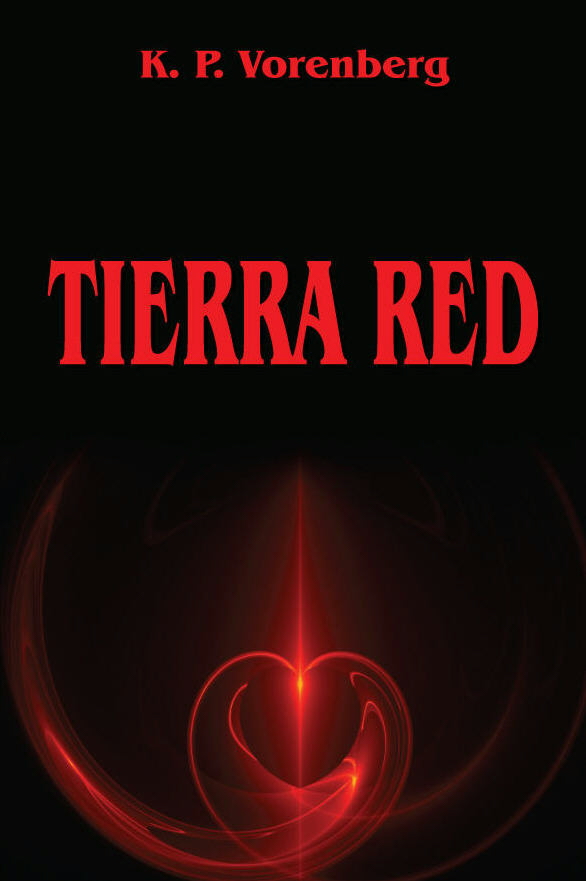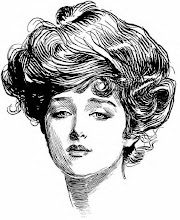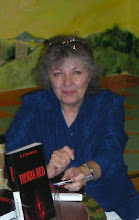(Opening paragraph was mandated by the competition)
The Forbidden Quest
Blues, whites, fiery reds and yellows -- overtaking the sky from dusk 'til dawn -- fascinate me, whether in my dreams, or longings for that something more, whirling nebulas, mysterious planets and stars I barely see -- my Beaded Art Doll, my celestial reflection, I name you . . .
Galilea.
She stood on the rim of the Yshtan Crater as each moonrise left the horizon, waiting for the ninth moon to appear. She prayed that the astral winds would be favorable. It was the eve of the Prime Solstice, the only night possible to view her sacred object, and her telescope stood ready at her side.
When the ninth pale moon broached the horizon, Galilea's heart quickened. She placed a hand on her chest and took a deep breath. Everything depended now on the astral winds. Her theory would be scoffed at once again if she could not produce evidence of her find. Her very existence would be threatened if she failed in this endeavor, for the Kaeloan Council had forbidden her to search the universe for an object that could not possibly exist.
As the ninth moon reached its zenith, a cold wind began to flow around her. Galilea shivered, more in anticipation than from the chill. Patiently, she watched as the veils of cosmic debris lifeted and afforded a pristine view of the universe that lay beyond her own star. The astral winds seemed stronger tonight and she was nearly overcome with the breathtaking sight that unfolded above her.
Galilea focused her telescope on a distant galaxy, searching for the rare blue planet that she must prove existed. She had armed the telescope with a special device meant to gather that proof and she tempered her eagerness to trigger it until the exact moment the planet came into view. When she located the star at the core of the galaxy, Galilea began a slow sweep of the millions of objects swirling around it. Though many of these objects were much larger than the one she sought, none of them exhibited the qualities necessary for life to exist.
At last, she found the blue planet. Galilea steadied the telescope and prepared to trigger the device attached to it. Behind her, she heard threatening voices and shouts above the din of the terrestrial vehicles climbing the road to the rim of the crater. The Kaeloan Council began to storm the rim.
Galilea stood fast and defiantly took another sighting through the telescope. Confidant that the blue planet was still in its sight, she fired a beam directly at it. The beam captured the blue planet and returned a holographic image of it to her outstretched hand. As the blue planet turned on its axis, white clouds swirled across the poles and the outlines of land masses and blue oceans. The planet's atmosphere shimmered in the palm of Galilea's hand.
The members of the Kaeloan Coucil gasped in recognition of what Galilea had done. She had proven that another planet existed where life was a real possibility. Although they had searched the universe for thousands of years, no other planet had been found with such characteristics. They had given up hope of ever finding life on another planet.
Galilea was a woman of vision and persistence. She was not daunted by narrow thinking or threats. She refused to believe that life could not exist somewhere else out in the vast reaches of the universe. She smiled as she watched the holographic image turning in her hand, and mused what name to give this wondrous orb.
*****
Galileo Galilei was a man of vision and curiosity, so much so that he nearly gave his life to explore the unknown universe. He was forbidden to publish his findings and threatened with death while living in an age which was dominated by austere philosophies. Although his telescope was barely adequate, what he did manage to see beyond the atmosphere of our planet Earth convinced him that the heavens held boundless mysteries to explore and that our planet was but a mere inhabitant of a greater space than one could imagine. He was the first astronomer to study the sun and map the sunspots he saw moving across the sun's surface, observe the moon's craters and Jupiter's satellites.
Who, today, could view the magnificent Hubble photos of the universe without feeling overwhelmed with curiosity and wonder? Who could not be in awe of the photos of millions of stars moving in mysterious configurations deep in the vast blackness of the universe? Galileo would have been thrilled to witness all the recent discoveries made through these photos.
Galilea is a tribute to Galileo, her head adorned with the golden radiance of our Sun. The upper portion of the front of her gown displays one of the most recent stunning astronomical discoveries, the hot star MWC922 -- the Cosmic Red Square -- a distant bipolar nebula exploding in near perfect symmetry in the constellation Serpens. The three major stars of the Hunter's belt in the Deep Orion Field of the Orion constellation adorn the lower portion of the front of her gown, Alnitak, Alnilam, and Mintaka -- brilliant blue supergiant stars that mark the night sky from late August through mid-January. The Pleiades star cluster, also known as the Seven Sisters, fills the backside of her gown. It is one of the most conspicuous objects in the night sky that is among the first to be marveled at when we are children. The faintest star in this cluster is still 40 times brighter than our own sun. The brightest star in this cluster, Alcyone, is 1000 times more luminous! Cosmic debris such as the veils that Galilea's astral winds disburse can be seen in the vicinity of the Pleiades -- clouds of minute grains of interstellar dust.
This doll is also a tribute to the men in my life who have fostered and shared a love for exploring the night sky and universe around us. My father who patiently taught all of his children about the wonders of the night sky. He died many years before the Hubble telescope was launched but he would have become as much of a Hubble photo junkie as I have become, excited beyond measure by each new discovery and enchanted by all of the discoveries. He would have been in awe of the vast numbers and shapes of galaxies that have been documented to date as indeed I am. And my dear husband, who lovingly indulges me with every Hubble photo book that is published, reads every email link to yet another Hubble discovery that I send to him, gifts me with the annual Hubble photo calendar -- and who humors my childish delight over each new Hubble photo.
Galilea prompted me to think of many things while she was being created. She evoked memories of nights spent in star dreaming and days filled with yearning to know more about the universe. She also kept whispering lines to me from one of my favorite poems by Robert Frost:
Earth's the right place for love: I don't know where it's likely to go better.








4 comments:
Truely magnificent, good luck with the competition - please let me know when the voting begins
WOW! Your story is fabulous too! It really makes the brave Galilea come to life! THANKS for sharing! PLEASE remind us when it is time to vote!
(there is one typo.... need to add a t to make hear become heart in the sentence that begins "When the ninth pale moon....")
Argh! Thanks, Krispis -- it's this darn keyboard! It has been sticking and I type too darn fast for it.
Kathy
I voted for your doll several weeks ago, but I just now got to read about her. I wish I could vote for her again, because not she has even more meaning for me than when I first saw her.
My husband worked at the Hat Creek Radio Observatory in 2001. It was a lot of fun for him to interact with the scientist there. He was the engineer that worked with the microwave antennas. One of the projects that they were going to embark on was searching for life. They now have in place the first Phase of the Seti Project.
Post a Comment